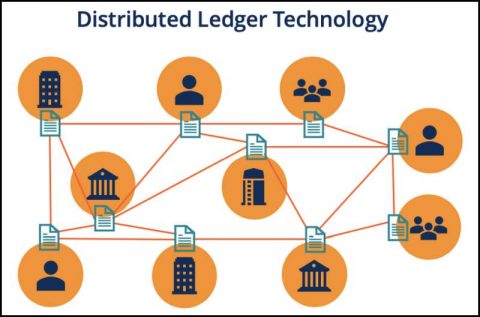Distributed Ledger Technology underpins blockchain networks. So, what are the features of this technology, what does it do?
Distributed ledger technology (DLT); It is the infrastructure in which encrypted and fragmented data is stored in a decentralized manner. Network participants can access, update, and support data verification processes within their authorization. Since the data is located at more than one point and the system operates with the consensus established among the network participants, there is no need for an authority or administrator.
The distributed ledger technology, which is built on a Peer to Peer (P2P) network system, can be developed in an open (public) structure that can be accessed by everyone, or in a private structure that can be accessed by authorized users, depending on the rules of the network.
Blockchain networks can be thought of as an upper layer of distributed ledger technology. In other words, the blockchain is built on DLT logic, but not vice versa. In other words, there is no obligation to store data in blocks in every DLT infrastructure.
How distributed ledger technology works?
In order to better understand the working logic of DLT, it would be appropriate to briefly recall database systems.
Centralized database: In centralized structures, data is stored at a fixed point. Every user is directed to the same central computer network in the central database, which is standard in many server solutions. Since the data is located in a single center, bottlenecks may occur. Data stored in a single center becomes vulnerable to cyber attacks.
Decentralized database: In this type of database, which works more efficiently compared to its centralized predecessor, the contents are transferred to the relevant server after passing a certain filter. The decentralized database model, which is preferred in networks with high transaction traffic, works by automatically directing users to the relevant server. In case of possible attacks on decentralized databases, it is more secure than the centralized model, as hackers cannot access all of the data at once.
Distributed database: In the distributed database model, data is divided into parts and each part is stored on a different server. While it is possible for users to access data much faster, it is also possible to process large amounts of data at the same time.
Distributed databases, which are a solution to avoid bottlenecks encountered in centralized structures, also minimize the possibility of cyber hackers to leak data. Because in order for the data to be captured by the attacker, it is necessary to take over many servers and computers at the same time. This becomes more difficult as the number of network participants increases.
Just like distributed databases, distributed ledger technology works without the need for authority since it has a decentralized structure. Operations such as accessing, updating, archiving and validating data are implemented within the framework of the consensus created by the network users.
The data in the DLT structure is encrypted and stored and can only be accessed by people who have the key code. Since the data archived in a decentralized manner in distributed ledger technology is located in many points in fragmented form, there is no question of data destruction or manipulation.
Visits: 125




